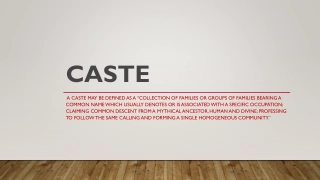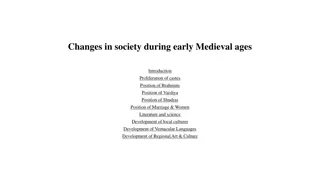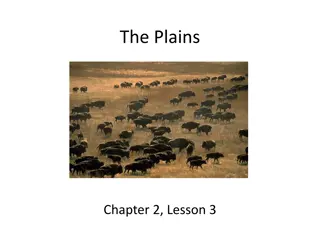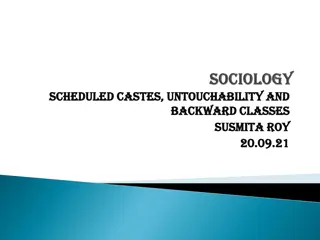Life of Nomadic Pastoralists and Emerging Castes
Nomadic pastoralists lived on milk and exchanged goods with settled agriculturists. New castes and hierarchies emerged as society evolved, with jatis becoming the basis for organizing communities.
Download Presentation

Please find below an Image/Link to download the presentation.
The content on the website is provided AS IS for your information and personal use only. It may not be sold, licensed, or shared on other websites without obtaining consent from the author.If you encounter any issues during the download, it is possible that the publisher has removed the file from their server.
You are allowed to download the files provided on this website for personal or commercial use, subject to the condition that they are used lawfully. All files are the property of their respective owners.
The content on the website is provided AS IS for your information and personal use only. It may not be sold, licensed, or shared on other websites without obtaining consent from the author.
E N D
Presentation Transcript
TGT(SS) ATOMIC ENERGY CENTRAL SCHOOL ,KAKRAPAR
LIFE OF NOMADS Nomadic pastoralists moved long distances with their animals . They lived on milk and other pastoral products . They exchanged wool, ghee, etc., with settled agriculturists for grain, cloth, utensils and other products . Theyboughtand sold these goods as they moved from one place to another, transporting them on their animals. Banjaras were the most important trader nomads. Sultan Alauddin Khalji used the Banjaras to transport grain to the city markets.
New Castes and Hierarchies As the economy and the needs of society grew,people with new skills were required.Smallercastes, or jatis, emerged within varnas. New castes appeared amongst the Brahmanas . Many tribes and social groups were taken into caste- based society and given the status of jatis. Specialised artisans (smiths, carpenters and masons) were recognised as separate jatis by the Brahmanas.
Importance of jatis in the Society Jatis, rather than varna, became the basis for organising society . Among the Kshatriyas, new Rajput clans became powerful by the 11th and 12th centuries . They belonged to different lineages, such as Hunas, Chandelas, Chalukyasand others. Many of these clans regarded as Rajputs. They gradually replaced the older rulers, especially in agricultural areas , With the support of the Brahmanas, many tribes became partof thecastesystem



![READ⚡[PDF]✔ Emerging Space Powers: The New Space Programs of Asia, the Middle Ea](/thumb/21554/read-pdf-emerging-space-powers-the-new-space-programs-of-asia-the-middle-ea.jpg)



















